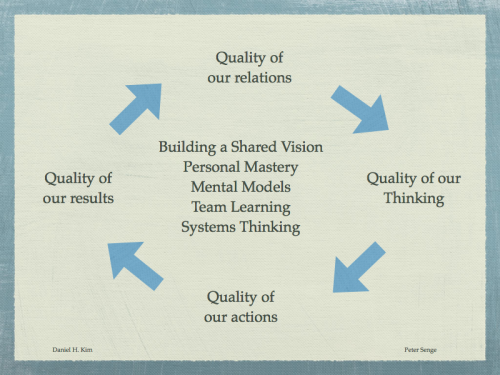What is great service?
Great customer experiences have an emergent quality. They arise out of a multiplicity of relatively simple interactions. Each one of them separately is quite simple – together they form a complex pattern that becomes an experience.
The challenge therefor lies not so much in the individual transaction – that is relatively easy – the art lies in the getting the combination right. The timing, the sequence the ’temperature’ – just like when you are baking a fruit cake.
When you bake a fruit cake you are in sync with you – hopefully. But when providing a great customer experience you need to be in ‘sync’ with everybody else (including the guest.) There needs to be a certain resonance between you and the rest of the crew.The better we ‘understand’ each other the easier it is to get it right.
The key word therefore is relations.
The way we interact with each other – the quality of that relationship – drives our collective thinking and sensitivity to the situation.
The way we think and feel about what is going on has a huge influence on the quality of our actions. And as we all know the quality of our actions at the end of the day drives the quality of our results.
Which then brings us back full circle to where we started, because what we achieve and the way we achieve it drives the quality of our relations.
So what will it be?
We can go round this loop with a positive spin and things will steadily improve… or we can chose the downward route and things will go from bad to worse.
It all depends how we decide to relate to one another.
I only just recently discovered Daniel H. Kim’s model, I realize that is has been around for while. But nonetheless it struck me with great force because suddenly here was a way to describe what I have intuitively been working towards with many of my clients over the past years. I have just not been able to articulate it so clearly before.
In 2013 this kind of thinking is going to be at the foundation of what I shall be working on. It is the next step after many years of working with the Service Profit Chain.
Once we understand and how the Service Profit Chain works the next logical step for me is to look at our organizations from a relations perspective.
And the tools we shall be working with in order to achieve that are:
• Building a Common Vision
• Personal Mastery
• Mental Models
• Team Learning
• Systems Perspective
These five tools are also not new – they are at the core of Peter Senge’s The 5th Discipline. But although quite a lot of industry managers have heard of The 5th Discipline I see few who are actually working with or implementing this kind of thinking. ( That was also the the experience I had when I first started introducing the Service Profit Chain – People might have heard of it but it remained something relatively abstract – and very few were actually implementing it).
So what do you think? Do you have a team or and organization that would benefit from taking a walk down this path? Or do you have something you would like to contribute?
Let me know I am very curious as to how this resonates with you.
